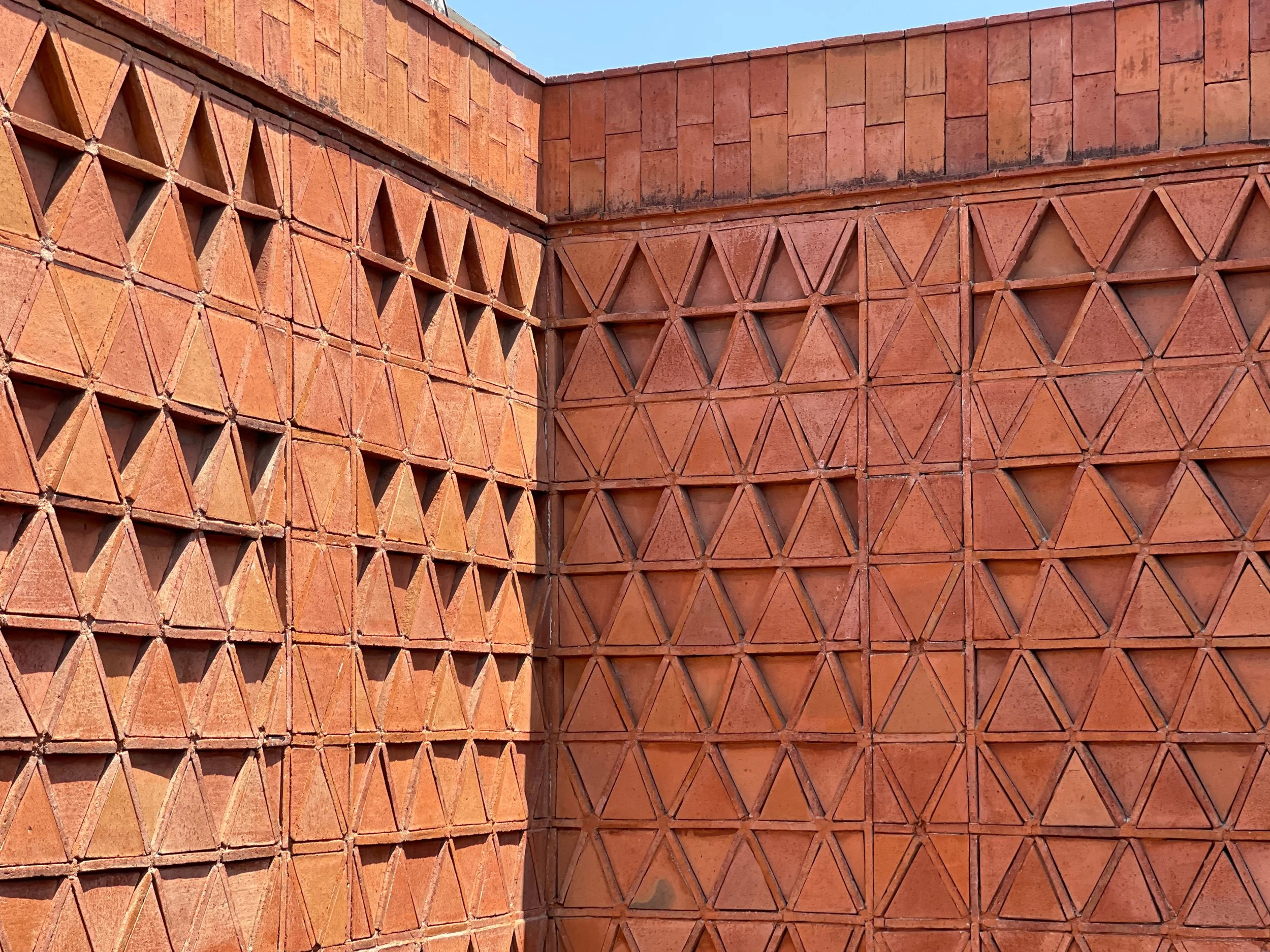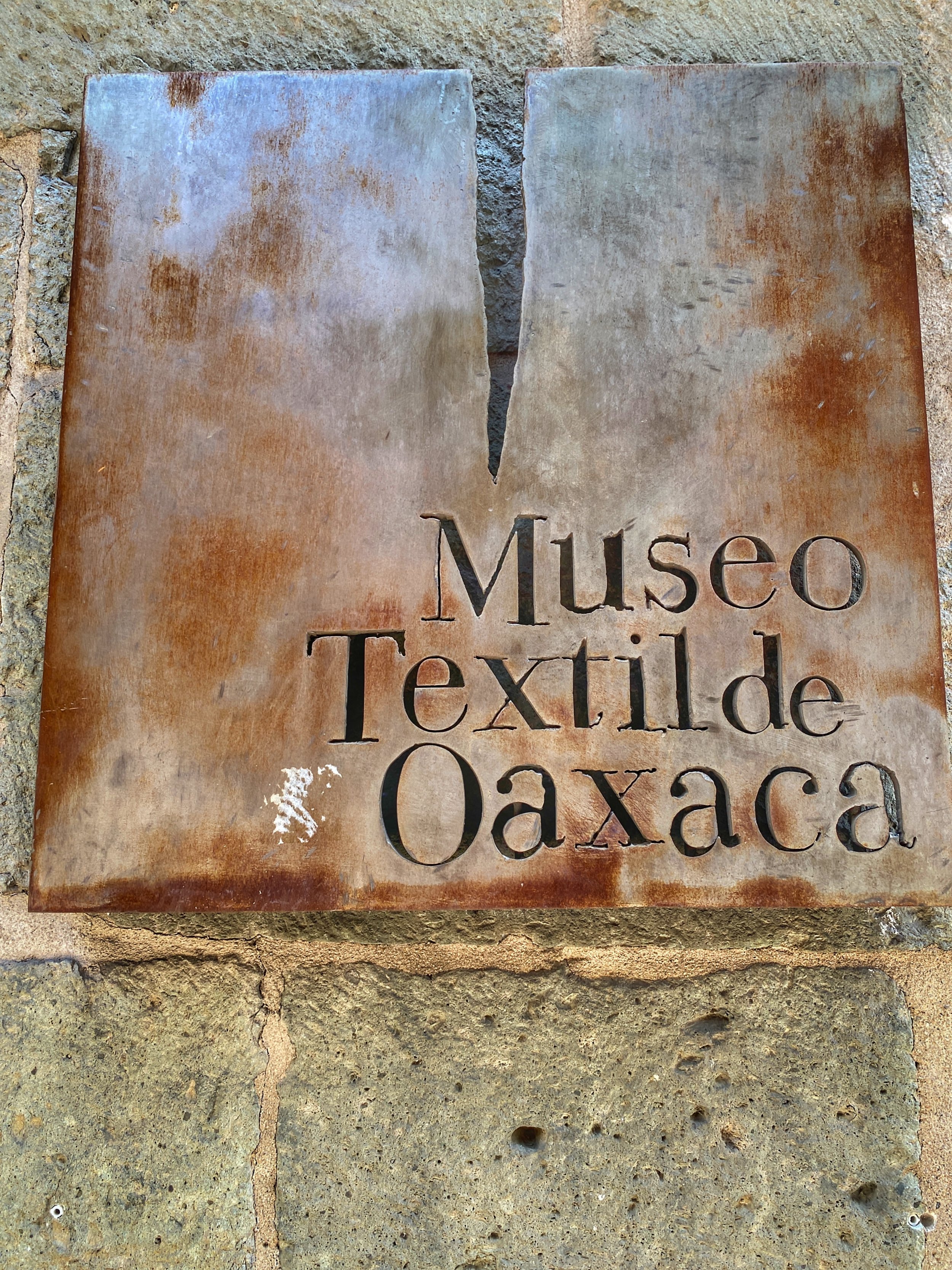El Museo Textil de Oaxaca is a free attraction — and well worth a quick visit.
The Textile Museum of Oaxaca showcases contemporary art exhibits, such as Ephemerus by Cecilia Salcedo, which was in the upstairs gallery when we visited.
I know plenty of people go gaga for textiles. And while I can certainly admire the craftsmanship of a woven cloth (and have a great fondness for quilts), textile-centric excursions wouldn’t be on our short list.
If the Museo Textil de Oaxaca wasn’t literally in the same building as our hotel (the delightful Casa Antonieta), I don’t know that Duke and I would have popped in.
And that would have been a mistake.
“The museum is housed in a mansion with a green stone façade build by a Spanish merchant.
How did he earn his fortune? He exported cochineal, the red dye made from bugs that was more precious than gold — which provides a nice connection to the Museo Textil. ”
Even if textiles aren’t your bag, baby, you should stop by for a brief visit — even just to admire the design of the interior courtyard. A philanthropic venture of the Fundación Alfredo Harp Helú, a private foundation, the museum is open to the public and free to enter. So you really have no excuse not to devote time here.
The museum is small, with a few galleries on the first floor and one upstairs.
A Material World
When we visited, we began on the ground floor, which is set up very much like an art museum — the textiles on the wall could very well be paintings. There are only a few small rooms, and a somewhat haunting nature soundtrack played as we wandered the galleries.
One of the ground-floor galleries
The striking courtyard of the Museo Textil de Oaxaca
Upstairs, there was only one large room open to the public, and the exhibit when we were there felt a bit interactive.
Ephemerus by Cecilia Salcedo was born of craving nature during pandemic lockdowns. I can remember Duke and I taking walks along Inner Lake Shore Drive in Chicago just to get out of the house when COVID-19 silenced Chicago. The lack of cars and other ambient noise meant we could hear birdsong like never before, and we noticed the buds appearing on the trees we passed every day. In a strange way, it was beautiful, as if the world had forced us to literally pause, listen and observe.
Salcedo used branches to hang her cloth prints of leaves — a project born of craving nature during the pandemic lockdown.
The trees seen through the balcony doors pair nicely with the nature re-creations in the exhibit.
The artist used a technique called ecoprinting, making stamps of leaves on bolts of fabric that are draped from the ceiling like banners. They pair nicely with the actual branches hung above and below, strewn about in piles of dirt and leaves — as well as the leaves in the trees that can be seen through the open balcony doors. I found the space to be very evocative, like entering a magical forest (if you have a good imagination, as I do).
“All fleeting stages, even this pandemic, afford us the opportunity to renew our perspective of the world that surrounds us and, above all else, the role that we play in it,” writes Hector M. Meneses Lozano, the museum director, about the exhibit.
Salcedo used a technique called ecoprinting to leave the impressions of leaves on cloth.
The museum views itself, in part, as a place to showcase contemporary art, and that mission was obvious in this second-floor gallery.
The textile museum is part of a massive building known as the Ex Convento de San Pablo, sharing the space with a boutique hotel and a cultural center.
History of the Ex Convento de San Pablo
The Oaxaca Textile Museum is housed in the same massive edifice as not only Casa Antonieta but the striking Centro Cultural de San Pablo as well.
The site originally housed the Convento de Santo Domingo Soriano. Established in the year 1529, it was the second Dominican foundation in the Americas. Later, the monastery was dedicated to Saint Paul, which explains why it’s now referred to as the Ex Convento de San Pablo.
It seems little if any of the original structure still exists, though. At the beginning of the 17th century, a series of earthquakes caused massive damage, forcing the church to rent and sell off parts of the monastery.
The first structure built on the site of the monastery was a small one-story adobe home — though it was torn down by Spanish merchant Ángel de Antelo y Bermúdez. Don Ángel built a two-story Oaxacan Baroque mansion, with a green stone façade, and the property became known as Casa Antelo.
How did Don Ángel earn his fortune? He exported cochineal, the red dye made from bugs that was more precious than gold — which provides a nice connection to the textile museum.
Wally and Duke were obsessed with the pattern of the courtyard wall — a sort of stone textile itself.
The structure was enlarged, and eventually gut-rehabbed to house the cultural center, hotel and textile museum, which opened in 2008.
There’s a small shop on the first floor, which has some nice items but smelled a bit mildewy when we visited. –Wally
The deets
Admission: Free
Hours: Open every day from 11 a.m. to 6 p.m.
Tours: Free one-hour tours are offered at 5 p.m. (though these were discontinued during COVID)
Museo Textil de Oaxaca
Miguel Hidalgo 917
Centro Histórico
68000 Oaxaca de Juárez
Oaxaca
México

































